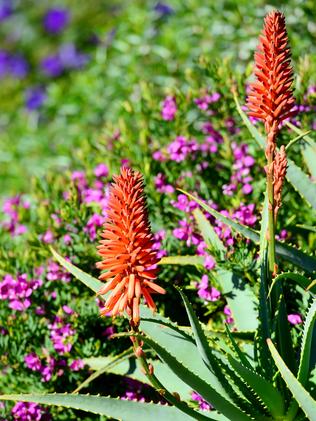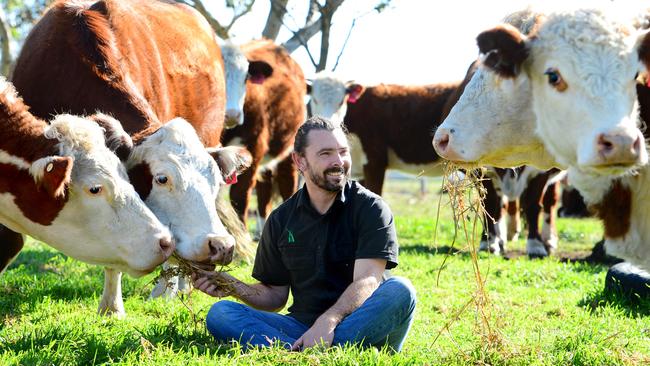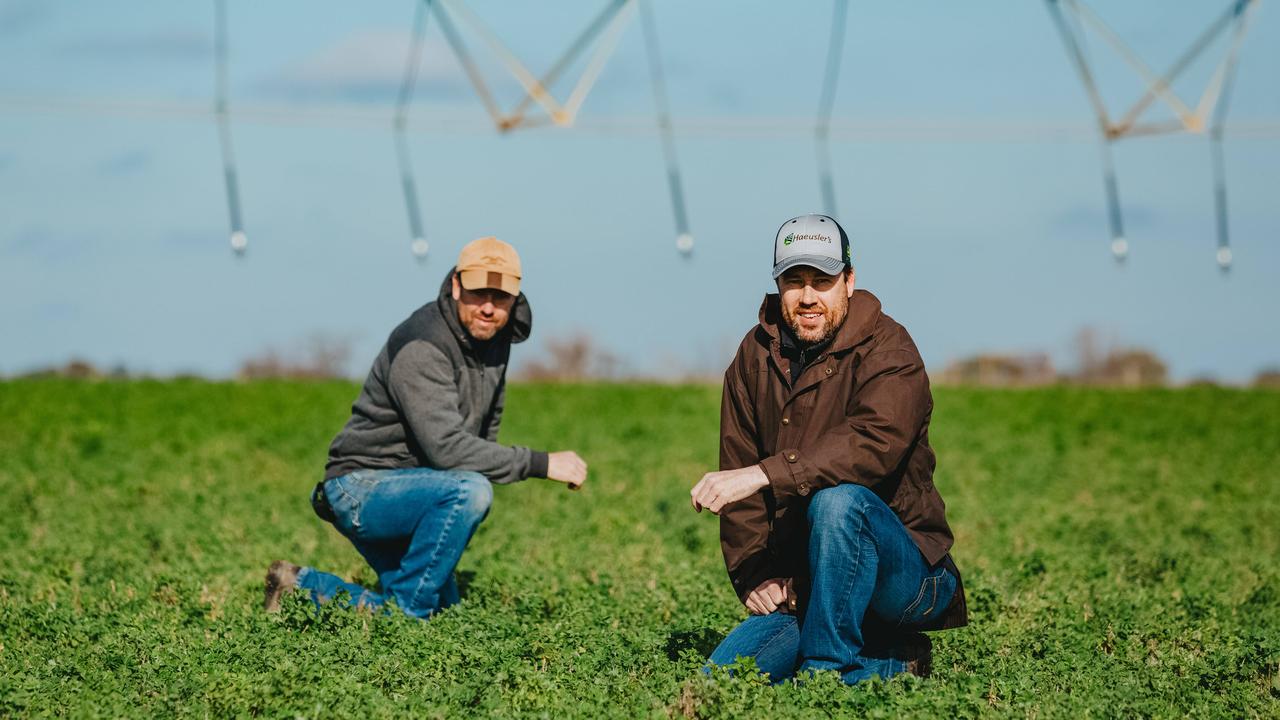SageFarm: Getting all aspects of production under control
CHRIS Balazs oversees nearly all the steps in his supply chain to deliver superior quality produce to his customers. Now, with market forces and technology on his side, he plans to control the final missing link.

CHRIS Balazs has made some impressive renovations on his property at Bannockburn.
On his 44-hectare farm north of Geelong, Chris has morphed a shipping container into a butchery; transformed reclaimed timber into everything from a farm shop to windbreaks; changed dry, cracked clay into rich, fibrous soil; and expanded a small herd of Hereford cattle into a multi-enterprise business.
Perhaps the most impressive overhaul has been Chris himself — who has grown from a novice beef farmer into an agtech visionary in six short years.
It all started back in 2011 when Chris began dabbling in cattle farming.
“I call myself a corporate refugee,” says Chris, who started running a herd of about 48 Herefords as a part-time pursuit. At that time he was still commuting daily to his job as a pharmaceutical scientist in Melbourne.
“At first myself and my sister, who has a farm on the other side of Bannockburn, were producing our own beef. We became a bit annoyed with the poor value we were getting through the saleyards and we thought, ‘Why not just sell it direct ourselves? How hard could it be?’”
The pair turned to selling beef at farmers’ markets, and the grass-fed meat business snowballed from there. Chris now runs SageFarm full time, having wrapped up his pharmaceutical career two years ago to focus on the farm operation.
The business has branched into lamb, pork and eggs, selling produce from a network of like-minded farmers, using six sales channels. Chris employs six people on the farm including a farm manager, butcher, meat packer, farm hand and chef.
“It went from a fledgling hobby and moved into being a full-on business,” Chris says. “The whole focus of what we’ve been doing at SageFarm is about the authenticity and provenance of what we produce, showing that traceability back to our farm.”
And to ensure his products are fully traceable, Chris has taken control of nearly every link in his food supply chain, from the herd structure and diet of livestock, to the butchery, packaging and sale of the meat.
“The missing link is the slaughter,” Chris says, explaining it is the one stage of SageFarm’s production chain that is beyond his supervision. Now he hopes to bring this final link under his control, and complete his vertically integrated business.
“WE ARE about traditional farming as opposed to conventional farming,” Chris says. “We charge a premium for it, but if we market it well and tell a story, people are happy to pay a premium if they know it’s going back to the farmer.”
SageFarm’s story hinges on Chris’ low input, low stress, recycle-reuse-reduce-regenerate approach to farming. All meat and animal products sold through SageFarm come from livestock that are raised free-range. His livestock are reared in a natural herd structure and on a diet of pasture with no supplementary grain, because “their digestive systems are established to eat grass, not high energy grains,” Chris says.
“At the start I called myself a beef farmer. Now I see myself as a soil farmer. If we get the soil right, we get the grass right. If we get the grass right, we get the cattle right. If we get the cattle right, we get the beef right.”
Customers are obviously happy to pay more for SageFarm’s story because Chris had to reach out to other farmers to supply enough livestock to keep up with demand. Today, a network of 17 farmers from Bannockburn and surrounds supply meat to SageFarm. They all follow SageFarm’s grass-fed philosophy.
This year Chris expanded the SageFarm offering to include pork, supplied by Xavier and Laura Meade from Barongarook Pork, and eggs from his own flock of free-range hens. Farm manager Derek Herni is planting a market garden on Chris’ property and a plan for producing meat chickens is in the works.
Chris doesn’t apply any herbicides, pesticides or artificial fertilisers. Pasture and soil are treated with compost, made on Chris’ property by Geelong Compost. The company leases 1.2 hectares from Chris to make compost for nearby customers, paying Chris for use of the land by way of compost in return.

Chris says he is happy for some weeds to remain in his pasture. “We actively encourage certain weeds, such as nettle and amaranth,” he says, explaining these weeds are nutritionally dense and send down tap roots, which break up compacted soil and, given time, help pasture to flourish. He doesn’t tolerate serrated tussock or thistle, and removes them by hand.
SageFarm produce is sold through eight retailers across Geelong and the Surf Coast, 15 restaurants, six farmers’ markets a month, an on-farm shop, online and through community supported agriculture subscriptions.
About two cattle and 15 lambs are processed a fortnight, with full-time butcher Tim Woller breaking down all the carcasses in the new on-farm shipping container-turned-butchery.
Chris’ final goal is to eliminate the live transport of animals to an abattoir and increase animal welfare by developing a mobile slaughter unit.
FIVE collaborators, including Chris, are operating under the name FarmGate MSU. They are in the early stages of designing a unit that could be transported from farm to farm, providing slaughtering services, enabling the product to be sold for human consumption. FarmGate MSU is one of 11 agtech start-ups that are completing a six-month mentoring program through an accelerator program called SproutX.
There are no similar slaughtering units or services operating in Victoria. PrimeSafe regulations require meat for commercial sale to come from livestock slaughtered at a licensed abattoir.
In the US and the UK, mobile slaughter units have been trialled and some are being used. Chris says international models have “a patched history” of success.
“There are a lot that have succeeded and probably more that haven’t,” he says. “The build isn’t that complicated. That’s not the challenge. It’s making it commercially viable.”
He says the obvious market for a mobile slaughter solution in Australia are farmers with small numbers of livestock, who are dedicated to transparency.
“There is a gap in the market,” Chris says. “It is both demand and supply driven. This doesn’t work in countries that don’t value animal welfare the way we do.
“All the small abattoirs have closed down because they can’t compete,” Chris says, adding there are just 10 that do contract jobs.
Butcher Tim adds: “Go back 10 years and find out how many were open then. Probably double.” In fact, in 1989 there were 100 licensed abattoirs and slaughterhouses. Today there are 38.
Chris believes FarmGate MSU’s design will be commercially viable, and if his record of turning ambitious concepts into reality is anything to go by, he won’t let hurdles, even regulatory ones, deter the group’s plans.
“We think it would be great for helping small-scale farmers who have their own label,” Chris says. “This could actually be a real game changer.”



